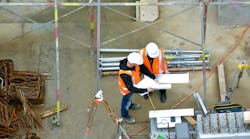Sure, the 2002 National Electrical Code hasn’t even been on your shelf long enough to start gathering dust, but the process to begin updating it has already begun. The deadline for the first phase of the next edition is fast approaching, and proposals for changes for the 2005 NEC must be received at NFPA headquarters by 5:00 p.m. EST on November 1, 2002.
Those interested in submitting proposals may do so by mail, fax, or the Web at www.nfpa.org/Codes/ProposalsAndComments.asp. A 2005 NEC proposal form is also located in the back of the 2002 edition, or you can download a copy in PDF form from www.nfpa.org or www.necdigest.org.


